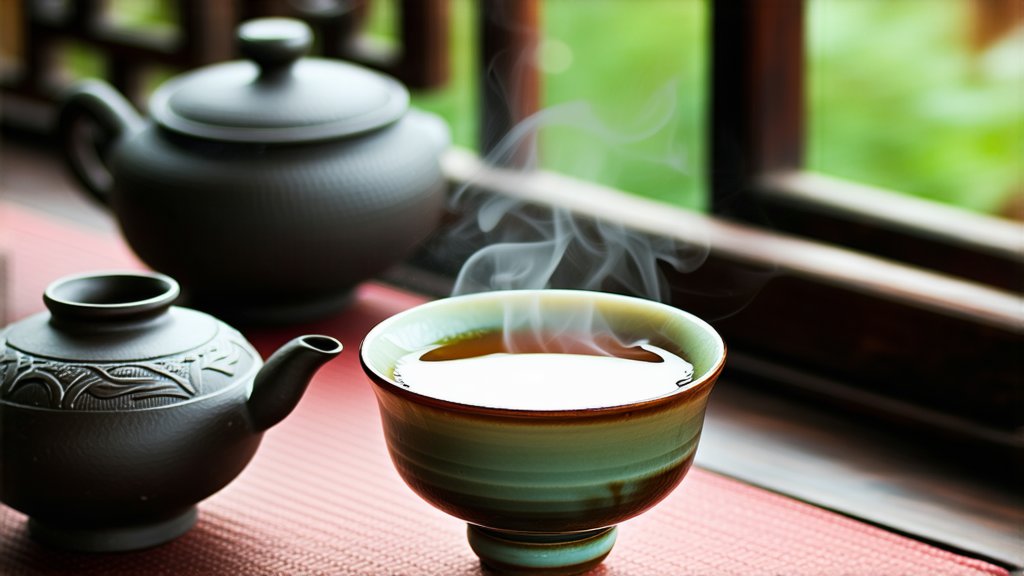
Pu-erh tea stands as one of the most enigmatic and revered members of the dark tea family in China, captivating tea enthusiasts worldwide with its deep flavors, rich history, and unique health benefits. Originating from the Yunnan province, this remarkable beverage has transcended centuries, evolving through intricate processes that have been perfected over generations. In this exploration, we delve into the storied past, diverse varieties, meticulous production methods, and the art of savoring Pu-erh tea.
A Glimpse into History
The roots of Pu-erh tea can be traced back to the ancient caravan routes of the Tang Dynasty (618-907 AD), where it was initially used as a form of currency and traded along the legendary Tea Horse Road. However, its prominence truly flourished during the Ming (1368-1644) and Qing (1644-1912) dynasties when it became a staple in imperial courts and among the common folk alike. The name "Pu-erh" is derived from the town of Pu'er in Yunnan, which served as a major hub for tea trading and production. Over time, Pu-erh gained recognition not only for its distinctive taste but also for its purported health properties, particularly in aiding digestion and promoting longevity.
Varieties of Pu-erh Tea
Pu-erh tea is broadly categorized into two main types: raw (Sheng) and ripe (Shou). Each variety undergoes a different aging process, resulting in distinct flavor profiles and characteristics.
-
Raw Pu-erh (Sheng): This type is made from sun-dried tea leaves that are then compressed into cakes, bricks, or other shapes without undergoing artificial fermentation. Raw Pu-erh is prized for its potential to age and transform over time, developing complex layers of flavor as it matures. It typically starts with a more astringent and robust taste, gradually mellowing into earthy, floral, or fruity notes after several years of proper storage.
-
Ripe Pu-erh (Shou): In contrast, ripe Pu-erh undergoes a process known as 'wet piling' or 'wo dui,' where piles of tea leaves are intentionally dampened and allowed to ferment under controlled conditions. This accelerates the aging process, producing a tea that is ready to drink sooner with a smoother, mellower taste compared to its raw counterpart. Ripe Pu-erh often exhibits rich, woody, and sometimes sweet flavors with hints of caramel and spice.
The Art of Pu-erh Production
The journey from leaf to cup for Pu-erh tea involves several stages, each contributing to its unique character:
-
Harvesting: High-quality Pu-erh is harvested from ancient tea trees, some over a thousand years old, found primarily in the mountainous regions of Yunnan. These trees grow wild or semi-wild, imparting a distinct terroir to the tea.
-
Withering: Freshly picked leaves are spread out to wilt under the sun, reducing moisture content and softening the leaves for rolling.
-
Fixation: The withered leaves are briefly heated to halt enzymatic activity, preserving their green color and preventing oxidation.
-
Rolling: Leaves are rolled into tight spirals, breaking cell walls and allowing enzymes to interact with air, initiating fermentation.
-
Fermentation (for Sheng): For raw Pu-erh, this stage occurs naturally over time as the tea ages, while for ripe Pu-erh, it involves the aforementioned wet piling process.
-
Drying: After fermentation, the tea is dried again to stabilize its quality.
-
Compression: Finally, the tea may be pressed into various forms such as cakes, bricks, or tuocha (small round cakes), facilitating long-term storage and aging.
Tasting Pu-erh: A Symphony for the Senses
Appreciating Pu-erh tea goes beyond mere consumption; it is an experience that engages all senses. Here’s how to embark on this sensory journey:
-
Preparation: Use a Yixing clay teapot or a Gaiwan (a lidded bowl) for brewing. Boil water to around 95°C (203°F) for raw Pu-erh and slightly cooler for ripe Pu-erh. Rinse the leaves quickly to awaken them.
-
Infusion: Add the leaves to the pot and pour hot water over them. Let the first infusion sit for about 10-15 seconds before pouring out to remove any impurities. Subsequent infusions can be steeped longer, gradually increasing the time to extract full flavors.
-
Observation: Note the color of the liquor, which ranges from amber to deep brown depending on the type and age of Pu-erh.
-
Aroma: Inhale deeply to detect subtle fragrances—earthy, woody, floral, or even medicinal notes might emerge.
-
Tasting: Sip slowly, allowing the tea to coat your palate. Pay attention to its texture (smooth or astringent), body, and evolving flavors. Raw Pu-erh often starts strong and finishes mellow, while ripe Pu-erh offers immediate warmth and complexity.
-
Aftertaste: Savor the lingering aftertaste, which can reveal nuances like sweetness, spiciness, or a lasting coolness in the throat.
Pu-erh tea is not just a beverage; it's a cultural artifact that encapsulates the wisdom of ancient practices and the artistry of modern tea makers. Its depth and versatility make it a subject of endless fascination and a cherished companion for those seeking solace in a warm cup. As you embark on your own journey with Pu-erh, remember that every sip tells a story—one that spans centuries and continues to unfold with each passing year.